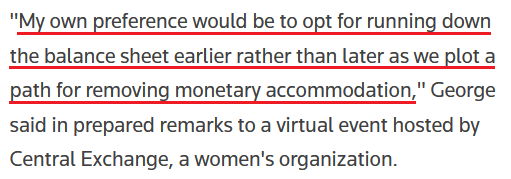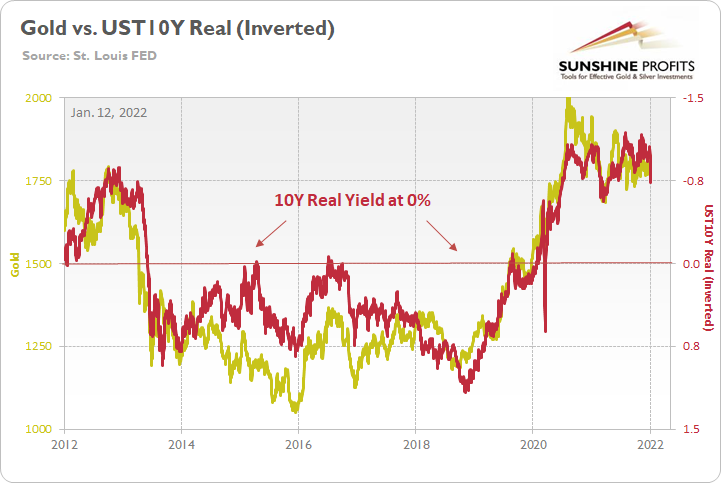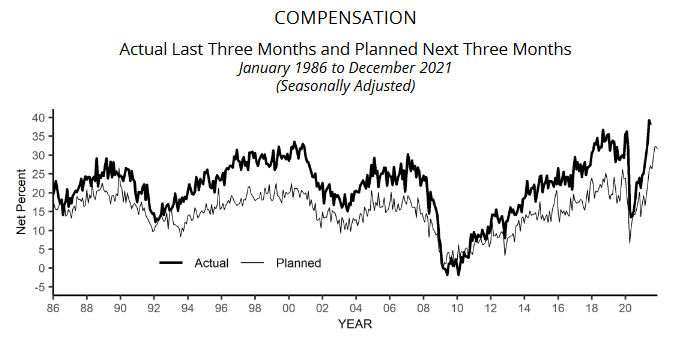While gamblers returned to the stock market and their optimism helped uplift the PMs, Fed hawks were out in full force on Jan. 11. Thought market participants ignored their ominous warnings, the harsh realities will likely sink in over the medium term.
To explain, I wrote on Jan. 5:
"Investors have gotten so used to a dovish Fed that they assume Chairman Jerome Powell won’t follow through and raise interest rates. However, with rampant inflation, a hot labor market and a resilient U.S. economy still in play, the PMs may find out the hard way that the Fed isn’t bluffing."
To that point, Powell was questioned about monetary policy by the Senate Banking Committee on Jan. 11. He said:
“To get the kind of very strong labor market we want, with high participation, it is going to take a long expansion. To get a long expansion we are going to need price stability. And so in a way, high inflation is a severe threat to the achievement of maximum employment.”
Moreover, while I’m skeptical that Powell will be able to pull this rabbit out of his hat, he made it clear that quantitative tightening (selling assets and reducing the balance sheet) remains likely in 2022. He continued:
“The balance sheet is much bigger and so the runoff can be faster. So I would say sooner and faster – that much is clear.”
Thus, while another (likely) short squeeze helped uplift the S&P 500 and the PMs, and hurt the USD Index, the reality is that Powell was more hawkish on Jan. 11 than at any point in 2021.
Source: Bloomberg
On top of that, Cleveland Fed President Loretta Mester told Bloomberg on Jan. 11 that she supports a rate hike in March and has penciled in three rate hikes in 2022.
"If the economy in March looks like it does today and the outlook is similar (...), then I would support moving the funds rate up at that meeting and starting to move back from some of the extraordinary accommodation we needed earlier in the pandemic.”
Likewise, she also said that quantitative tightening should be a priority in 2022. "I'd like to set a path for the balance sheet," Mester said. "That will reduce accommodation and then we'll use our policy tool, the Fed funds rate, as our active tool."
What’s more, Atlanta Fed President Raphael Bostic said on Jan. 11 that he expects three rate hikes in 2022 and a drawdown of the Fed’s balance sheet.

Source: Reuters
Making four of a kind, Kansas City Fed President Esther George said on the same day that with inflation mirroring the 1980s and the U.S. labor market in solid shape, the Fed's "very accommodative" policies are no longer needed:

Source: Reuters
As a result, while the price action on Jan. 11 suggests otherwise, the foursome's remarks are extremely bullish for the USD Index and U.S. Treasury yields and bearish for the PMs. While I warned throughout 2021 that surging inflation would elicit a hawkish shift, Fed officials are making their points loud and clear. Thus, while 'risk-on' sentiment returned to the financial markets on Jan. 11, optimism should evaporate as the tightening process unfolds.
Know When To Hold ‘Em, Know When To Fold ‘Em
To that point, billionaire hedge fund manager Paul Tudor Jones warned on Jan. 11 that he doesn’t “think [Powell] can catch up fast enough to try to deal with the inflation problem he has right now.” He added: “We're getting ready to see a major shift, and it's going to have a lot of consequences for a variety of asset prices."
Moreover, he sees "tough sledding" ahead for stocks as the Fed may end up popping the "financial bubble" and the realization could result in "huge negative economic consequences." As a result, "the things that performed the best since March of 2020 are going to probably perform the worst in this tightening cycle," said Jones.
To explain, while he hinted at hyper-growth NASDAQ stocks and speculative assets like cryptocurrencies, the PMs suffer from a similar fundamental affliction. For context, the PMs are less volatile than speculative assets. However, it's important to remember that gold, silver, and mining stocks peaked amid the liquidity-fueled surge in the summer of 2020. Likewise, their uprisings coincided with real interest rates that were at all-time lows at the time.
Conversely, with the Fed's liquidity drain already unfolding and real interest rates poised to rise in the coming months, the PMs should suffer from the likely re-pricings. For example, when the U.S 10-Year real yield was at 0% or higher from June 2013 until October 2018, gold was stuck below $1,400 during that timeframe and actually fell below $1,100. As a result, if the Fed pushes its hawkish chips into the middle, don't be surprised if the PMs fold in 2022.
Finally, with the U.S. Bureau of Labor Statistics (BLS) releasing December’s Consumer Price Index (CPI) yesterday, another hot inflation print materialized. With pricing pressures unlikely to abate without policy action, the release should support the Fed’s newfound hawkish disposition.
To that point, the NFIB released its Small Business Optimism Index on Jan. 11. While the headline index increased from 98.4 in November to 98.9 in December, NFIB Chief Economist Bill Dunkelberg said:
“Small businesses unfortunately saw a disappointing December jobs report, with staffing issues continuing to impact their ability to be fully productive. Inflation is at the highest level since the 1980s and is having an overwhelming impact on owners’ ability to manage their businesses.”
On top of that, the report revealed:
“Twenty-two percent [of small business owners] report inflation as the single most important problem operating their business, a 20-point increase from the beginning of 2021 and the highest level since Q4 1981.”
As for wage inflation:
“A net 48 percent reported raising compensation, up 4 points from November and a 48-year record high reading. A net 32 percent plan to raise compensation in the next three months, unchanged from November’s record high reading.”
Source: NFIB
The bottom line? While the price action on Jan. 11 was contradictory, the fundamentals underpinning the USD Index and U.S. Treasury yields continue to strengthen. As such, the fundamentals underpinning the PMs continue to weaken.
While the PMs attempt to call the Fed’s bluff, they’ll likely find out the hard way that the central bank has a really strong hand. With inflation, employment, and consumer demand akin to three of a kind, the cards will likely be unkind to the PMs over the medium term.
In conclusion, the PMs rallied on Jan. 11, as the bulls gored everything in sight. However, with the fundamental outlook contrasting the recent price action, the PMs’ ‘lower highs, lower lows’ story of 2021 should continue in 2022.
Moreover, while the U.S. US 10-year Treasury yield consolidates after surpassing its 2021 high, more upside should materialize over the next few months. As a result, the precious metals’ bearish outlook remains unchanged.



